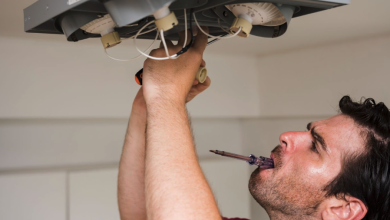Fuel‑Smart Farming: Unlocking New Holland’s Most Efficient Harvesters

Introduction
Fuel costs can eat into farm profits fast, especially when combined to drink diesel by the gallon. New Holland harvesters tackle this problem head on. Their engineers balance engine power, harvesting throughput, and fuel economy so you cover acres quickly without burning cash. In this article, we’ll explore the technologies that make New Holland combines some of the most fuel‑efficient machines in the field.
Turbocharged, Low‑Emission Engines
New Holland equips its CR and CX series combines with Stage 5 engines featuring variable geometry turbochargers and cooled exhaust gas recirculation. That combo delivers high torque at low RPMs, so you can keep a steady feed rate without revving the engine into the red. Lower RPM means less fuel per bushel harvested and reduced emissions.
Adaptive Drainage and Grain Flow
A lot of fuel waste happens when machines choke on uneven crop flows. New Holland’s Dynamic Feed Roll system senses crop volume, adjusting the feeder‑housing speed to maintain optimal separation performance. You avoid stalls and surges that make the engine surge for power. The result is smoother operation, better grain quality, and fuel savings.
Smart Harvest Suite Controls
Combine settings have traditionally been a balancing act between throughput and losses. New Holland’s Smart Harvest Suite automates many of these calibrations. Cameras monitor grain and straw flows, analyzing sample data in real time. The system tweaks concave clearance, rotor speed, and fan airflow to match crop conditions automatically, which means your combine always runs at peak efficiency.
Variable‑Speed Sprockets and Hydrostatic Drive
Power transmission efficiency matters. New Holland uses variable‑speed drive sprockets on threshing rotors to optimize power use. An optional hydrostatic header drive lets the header feed speed match the crop flow, reducing drag when material is light and ramping up when it’s heavy. You only use the power you need, cutting unnecessary fuel consumption.
Auto Guidance and Section Control
Steering overlap and unnecessary passes can add miles, and gallons, to your harvest. New Holland’s IntelliSteer auto‑guidance system holds straight harvest paths within one inch, eliminating wasted travel. For draper headers, Section Control shuts off outer sections when you reach field edges or previously cut areas. That precision translates directly into lower fuel use per acre.
Grain Quality Monitoring
Fuel smart isn’t just about saving diesel; it’s about maximizing every bushel’s value. New Holland combines come standard with grain quality sensors that display broken kernels and foreign material percentages. When quality dips, you adjust threshing and cleaning settings to reduce dockage. Higher quality grain fetches better prices at the elevator, effectively boosting the value of every gallon you burned to deliver it.
Telematics and Fuel Tracking
Knowledge is power, and it pays off at the pump. New Holland’s MyPLM Connect telematics platform logs fuel burn alongside harvest progress. You compare machines, operators, or fields to spot inefficiencies. Maybe one header design works better on dense wheat than another, or one operator idles less. With clear metrics, you make data‑based decisions that lower fuel costs season after season.
Operator Techniques for Efficiency
Even the best machine benefits from good practices. New Holland dealers offer operator training focused on throttle management, ground speed optimization, and unload timing. Simple habits, like shutting off the engine during long grain-tank unloads or reducing ground speed when losses spike, can save several percent of fuel over a season.
Lifecycle Support and Parts Access
When combining hundreds of engine hours per season, wear parts need timely replacement. New Holland’s parts network stocks filters, belts, bearings, and more to keep engines and hydraulics in top shape. Using genuine parts ensures your machine runs to its designed efficiency specs, avoiding the drag and leaks that cost fuel.
Conclusion
Let’s be honest: fuel efficiency isn’t a flashy upgrade; it’s a necessity. New Holland’s combines integrate advanced engines, adaptive controls, precision guidance, and operator tools to squeeze every drop of productivity, and every drop of diesel, out of your harvest. What this really means is lower operating costs, faster harvest windows, and healthier margins when you sell your grain. Lock in your fuel‑smart advantage and reap the rewards at season’s end.



